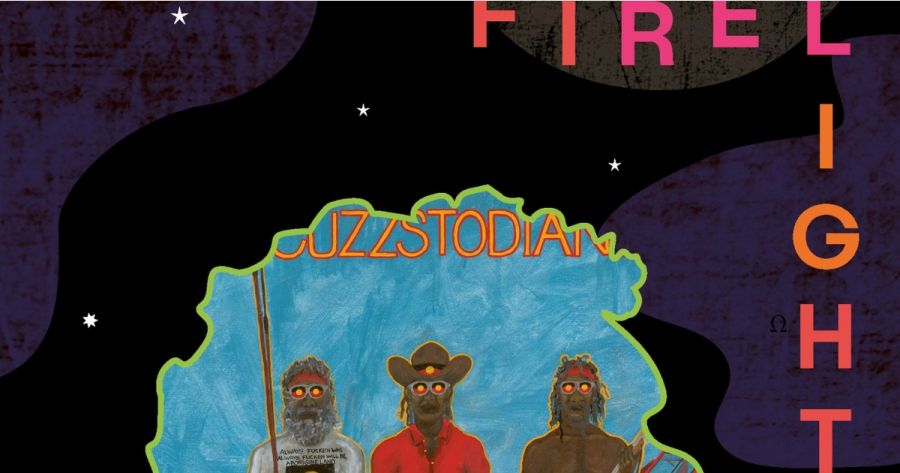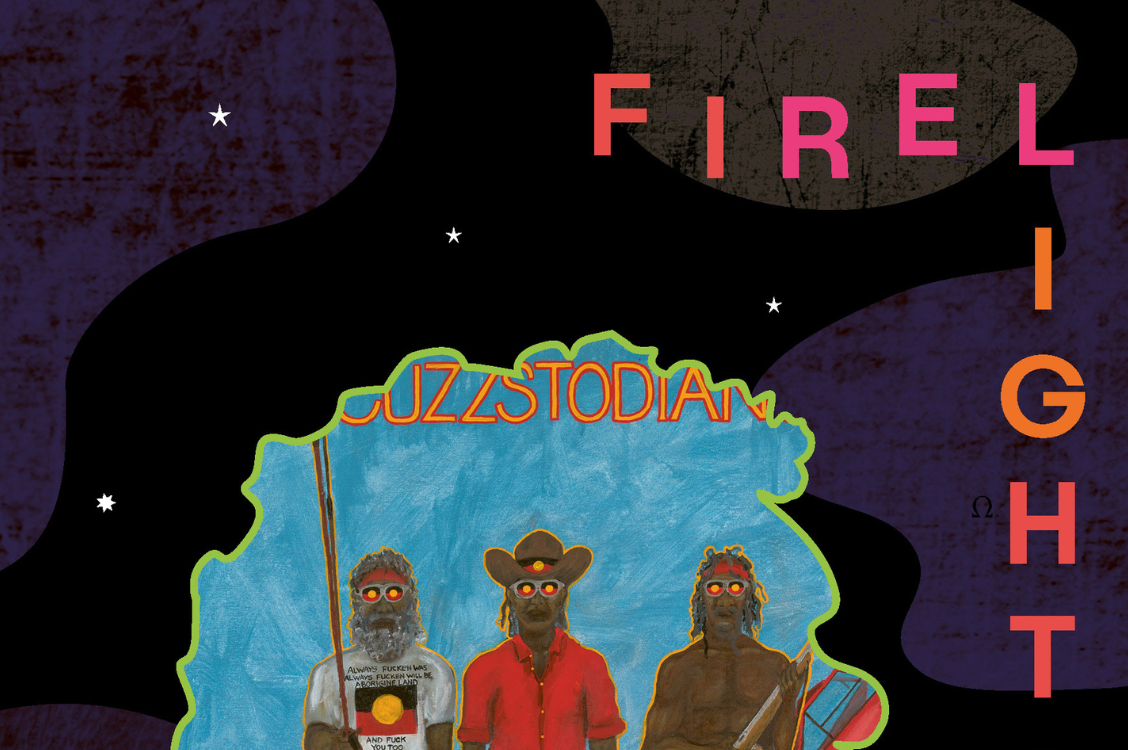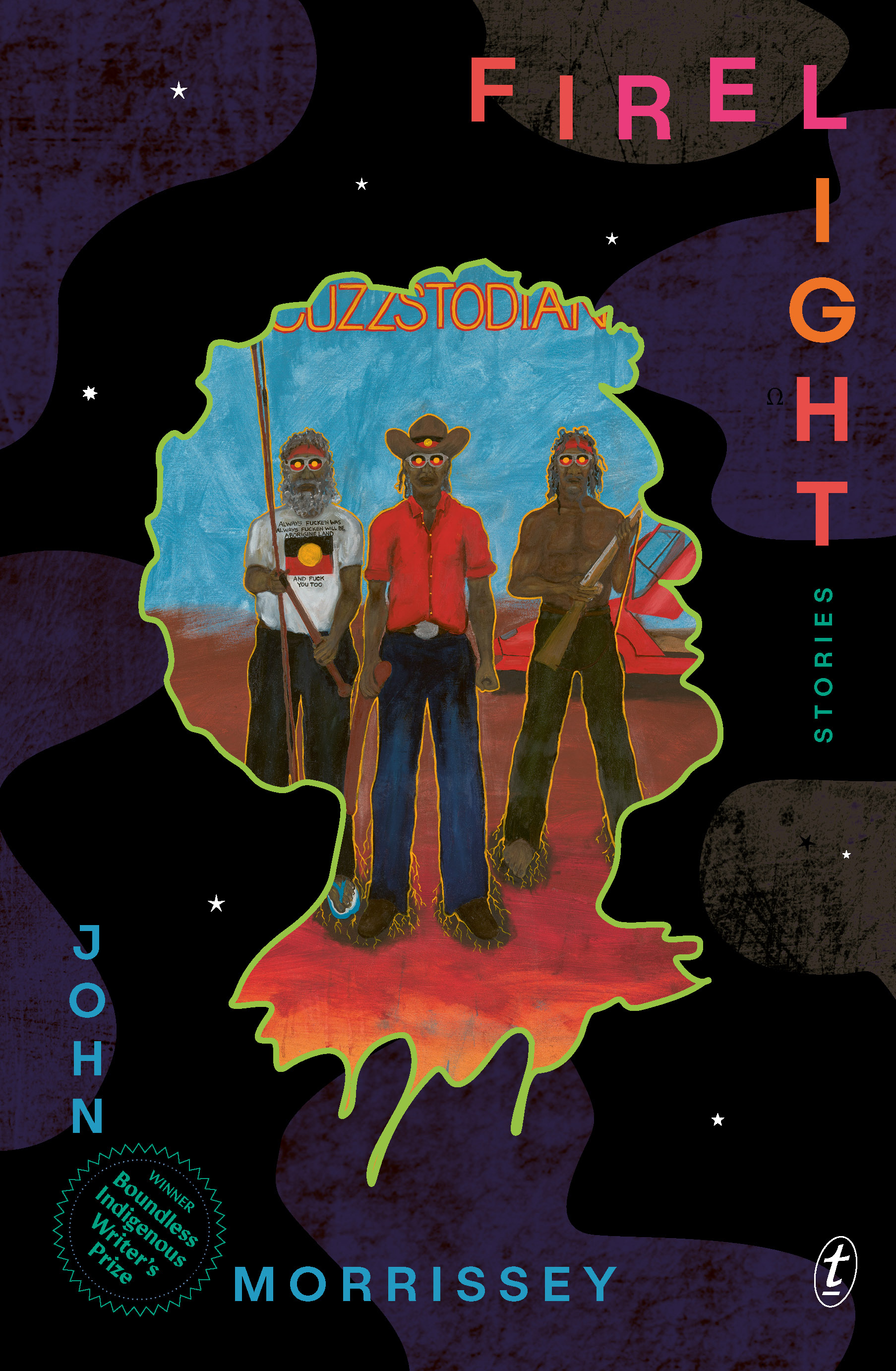
- Free Article: No
- Contents Category: Fiction
- Review Article: Yes
- Article Title: Lay down the book
- Article Subtitle: Stories as containers of emotion
- Online Only: No
- Custom Highlight Text:
The best literary short fiction gives the author an opportunity to stretch their limbs from poetry into abstraction, painting emotion in words without the need to make figurative or even internal sense. The story does not need to be a medium for delivering ‘story’, as such, but can become a container of emotion, for the feelings the artist intends to deliver. The emotion delivered by literary fiction teaches us to feel empathy for the characters, making the short form an effective empathy delivery vehicle.
- Featured Image (400px * 250px):

- Alt Tag (Featured Image): Claire G. Coleman reviews 'Firelight' by John Morrissey
- Book 1 Title: Firelight
- Book 1 Biblio: Text Publishing, $32.99 pb, 237 pp
- Book 1 Cover Small (400 x 600):

- Book 1 Cover (800 x 1200):

The opening salvo, ‘Five Minutes’, engages with storytelling and story itself, with the way our personal story, our political story, and our storytelling can be entwined and difficult to separate; it engages with how we as Indigenous storytellers can suffer from a collision with mainstream culture and from its failure to understand that we can be separate from our stories. It is difficult in this work to separate the artist from the narrator/protagonist, in a way that shows us how personal writing can be. It made me consider my own place as a writer, and how, in the end, most, if not all, writing is autobiographical to a degree, telling us as much about the writer as their story.
‘Autoc’, the central novella, in ten parts, is a meandering work of science fiction that walks the border between hyper-realism and surrealism in a way reminiscent of J.G. Ballard, a master of surrealist short fiction. It takes the reader on a journey that is part parable and part fever dream. Time, space, and people become unhinged, leaving the reader in a world of fable and myth, lost in a dream world. There is an aroma of Aboriginal realism to the novella, despite the fact that it appears to be set on a planet far from Earth. Our culture is displaced, and the displacement of the characters in the overwhelming and confusing novella is reminiscent and analogous of the Indigenous experience of displacement and the cultural effects of losing connection to Country.
Like ‘Five Minutes’, the story engages with writing and storytelling as art forms, and we consider in this novella how stories define who we are. At the end of ‘Autoc’, when you leave the story and the world without an obvious conclusion, you are left delighted by having more questions than answers. The story will be with you a long time; it might enter your dreams as your unconscious tries to unpack it, you might wake thinking about it. This is the sort of story that people could be talking about for some time.
I don’t enjoy being critical, but this book, like most before it, is not perfect. The storytelling and pacing could be considered uneven; at times it moves too fast, at others it slows and stops. Some works are beautiful and poetic, others less so. It could have done with one more edit to take off the rough edges and even out the pacing. However, as this is a collection in which the stories are not connected, some unevenness might be expected and is definitely acceptable.
In the end, though, and near the end, I am in love with the story ‘The Last Penny’, which is the penultimate story in the collection. The characters, even the tragic villains of the piece, are compelling. We feel for the protagonist narrator and for two men in her family, her father and brother, despite the fact that nobody in the story is very likeable. In the end universal love leads us to forgive these deeply flawed, even monstrous people. We are reminded that there is no such thing as an evil person, merely evil acts.
This all comes together in a piece about redemption, forgiveness, community, and family, wrapped up in a surreal ghost story.
Short fiction has always been an important part of speculative fiction, a genre that gained its initial popularity in journals rather than in book form. It is gratifying to see an Aboriginal writer claiming this space, the speculative short fiction landscape, and making it their own. I don’t believe we can ever do enough to encourage the development of Indigenous speculative fiction, an intersectional beast of a genre that opens up opportunities to, perhaps, finally make mainstream Australia understand our Indigenous worlds. Not the first or even only collection of Indigenous short fiction, Firelight is a fitting early move in what is sure to be a growing movement.


Comments powered by CComment